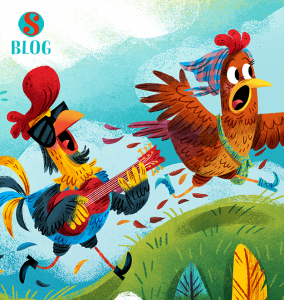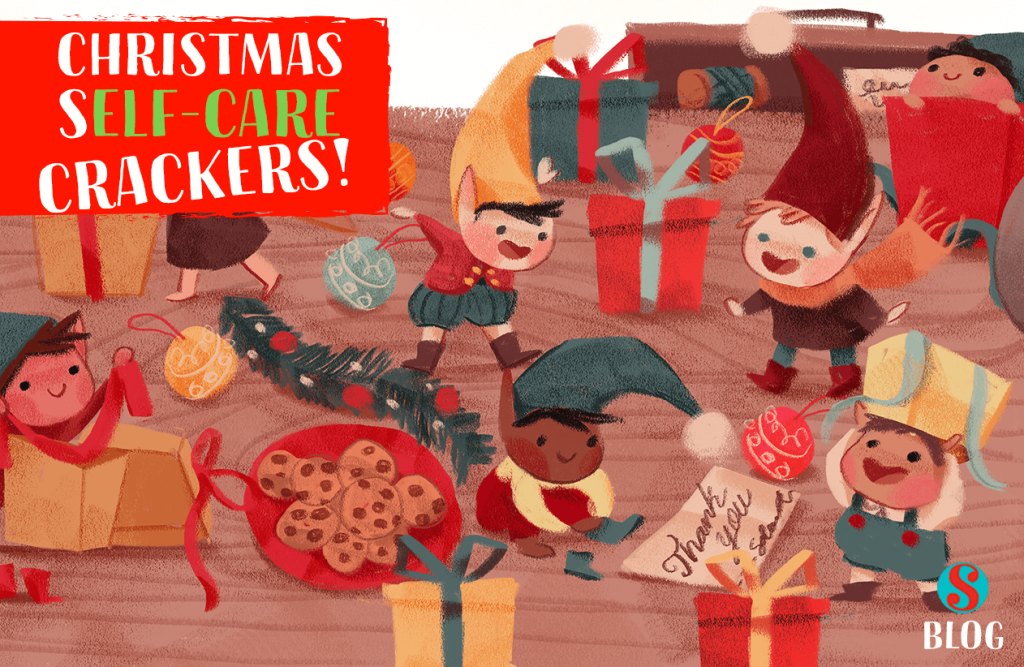
Christmas Self-Care Crackers
Sometimes the very best gift is not something that we want, but something that we need. With that in mind, the Storytime elves have wrapped up something a little bit special for you – a guest blog by counsellor and wellbeing expert Jessica Bowers. She writes the amazing entries for the My Mind Matters! section of Storytime, and she has come up with a fantastic list of ways we can take care of ourselves during the holidays…
 There is more to self-care than allowing ourselves a treat every now and then. It is about maintaining daily habits that of protect and promote our own happiness, health and well-being – particularly during stressful and busy times.
There is more to self-care than allowing ourselves a treat every now and then. It is about maintaining daily habits that of protect and promote our own happiness, health and well-being – particularly during stressful and busy times.
At a time the winter nights draw in and we recover from the trauma of the Covid-19 pandemic, it has never been more important to look after ourselves by practicing self-care.
As parents, carers and teachers, we are continually giving of ourselves to take care of our children’s needs – and our roles are challenging and multi-faceted. I am sure you have heard the saying, ‘you can’t pour from an empty cup’ – this is certainly very true!
It’s important to take time to think about your current self-care practices and consider where improvements might be made. Are you currently experiencing any of these signs, which might indicate that your self-care needs improving?
- Feeling more tired, irritable, stressed and/ or overwhelmed than usual
- Experiencing changes in concentration levels
- Eating and drinking more or less than usual
- Changes in your usual social interactions
- Sleeping less than or more than usual
Self-care practices can easily be incorporated into our daily routines. Even comprise of 2–5-minute activities can be invaluable if you are short of time. These could include:
- Sensory activities such as breathing in fresh air or cuddling your pet
- A hobby that gives you pleasure, like knitting or baking.
- You might prefer more spiritual activities such as reading inspiring quotes or lighting a candle.
- Physical activities might include stretching, yoga, dancing and even napping.
- Connecting with others and arranging a chat with a friend might be great too.
 Self-care can include acts of giving to others; my passion as a wellbeing writer was borne from the limited ways in which I could practice self-care during the first lockdown. However, I should note that if the act of giving becomes part of your stress and pressure, then it is no longer in the service of your own wellbeing.
Self-care can include acts of giving to others; my passion as a wellbeing writer was borne from the limited ways in which I could practice self-care during the first lockdown. However, I should note that if the act of giving becomes part of your stress and pressure, then it is no longer in the service of your own wellbeing.
This Christmas, more than any other, will be a time to celebrate and get together with our loved ones. Here are some self-care practices for you and your family to try this festive season. If you do make a New Year’s Resolution next year – I invite you to consider prioritising your self-care!
- Wrap up and go for a crisp winter walk in the fresh air as a family to blow the cobwebs away
- Plan a Christmas Movie Night with pyjamas and treats to share
Practice giving gratitude for 5 minutes each day as part of your daily routine - Light some candles and enjoy the warm glow in the evenings
- Look for some mindful, breathing exercises that you could do together while listening to some peaceful Christmas music
- Go to the library together and choose some festive books and stories to read during the holidays
- Find some new podcasts to enjoy whilst you do your household chores
- Try something new – maybe a new recipe or Christmas craft activity.
- Take it in turns to plan your favourite meal once a week.
- Create a home spa with face packs and nail painting – and give each other massages and foot-rubs
- Do some yoga and stretches together – Cosmic Kids yoga have some very engaging free online sessions suitable for younger children
- Download and play the Self-Care Bingo game from Storytime issue 88 and see if you can tick all the boxes on your table this season!
 Remember, practicing good self-care will have a positive effect on your children. They can learn how important it is to take action to care about and look after themselves in positive ways too. In ‘My Mind Matters!’ this month, we have introduced the topic of self-care to your children and linked it with the festive period as well.
Remember, practicing good self-care will have a positive effect on your children. They can learn how important it is to take action to care about and look after themselves in positive ways too. In ‘My Mind Matters!’ this month, we have introduced the topic of self-care to your children and linked it with the festive period as well.
We will be looking into this topic in more detail in the future, as it is important all year round! Starting anything new takes conscious effort as well as a bit of discipline and practice – but it is totally worth it!
I hope you have enjoyed reading our ‘Christmas Self-Care Crackers’! Wishing you all a Merry and relaxing Christmas and a New Year full of joy and stories to share!
Jessica is a mother of 3 children, a wellbeing writer, and a counsellor and psychotherapist. Prior to this, she worked with children with social, emotional and behavioural difficulties for over ten years.
She has written a series of wellbeing-themed children’s picture books, aimed at 4-7-year-olds. The first is titled Fantastic Fin Faces his Fears – it is available on Amazon.
Jessica is now delivering her ‘Get Active with Emotions’ workshop in schools, and gives talks about the books she has authored. Visit her website for more information: www.jessicabowers.co.uk
Email: enquiries@jessicabowers.co.uk.
Facebook and Instagram: @jessicabowerswellbeingwriter
Twitter: @bowerswellbeing.

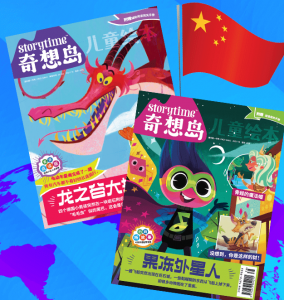 We’ll be working with local publishers, Muse Future, who will be adapting and translating our content into Chinese, but the stories and activities will remain largely the same. Though we have always included Chinese stories in Storytime because it is such a culturally rich place, our partners are also interested in the high quality of illustrations, the diversity of the content and stories from other cultures, in particular our real-life tales and fairy tales too.
We’ll be working with local publishers, Muse Future, who will be adapting and translating our content into Chinese, but the stories and activities will remain largely the same. Though we have always included Chinese stories in Storytime because it is such a culturally rich place, our partners are also interested in the high quality of illustrations, the diversity of the content and stories from other cultures, in particular our real-life tales and fairy tales too.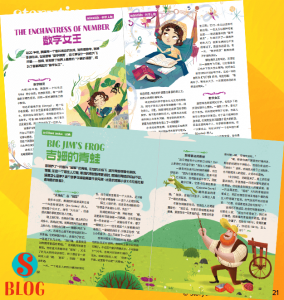 Ji Rongchang, Editor in Chief & CEO of Muse Future Ltd had this to say
Ji Rongchang, Editor in Chief & CEO of Muse Future Ltd had this to say ‘The Monkey King’ (
‘The Monkey King’ (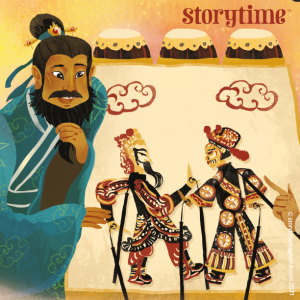 ‘Shadow Puppets’ (
‘Shadow Puppets’ (
 We believe that taking care of our minds is very important for kids and adults alike, so we have created a special
We believe that taking care of our minds is very important for kids and adults alike, so we have created a special  Thank you! Fantastic Fin is a children’s picture book aimed at 4-7-year old children. It’s a rhyming story, where Fin embodies different characters and animals to build his courage and resilience and face his fears. There is a fear fact file at the back to help children, and tips for parents and carers too. My passion for writing exploded during lock down, and my inspiration was my oldest son Finlay, who is now 8 – he needed help and support with building his courage when he was younger, and I used these ideas with him. I was also a little girl who had huge feelings, and I would have greatly benefited from some insight and understanding about this – so I guess I am also writing for that little girl too!
Thank you! Fantastic Fin is a children’s picture book aimed at 4-7-year old children. It’s a rhyming story, where Fin embodies different characters and animals to build his courage and resilience and face his fears. There is a fear fact file at the back to help children, and tips for parents and carers too. My passion for writing exploded during lock down, and my inspiration was my oldest son Finlay, who is now 8 – he needed help and support with building his courage when he was younger, and I used these ideas with him. I was also a little girl who had huge feelings, and I would have greatly benefited from some insight and understanding about this – so I guess I am also writing for that little girl too! Thank you – It took courage for me to start sharing my poems and insights, but I am pleased I have. I really want to educate and inspire others to look after their mental health and well-being and I have had such a positive response from those who follow me. I will continue to post these as well as develop more children’s resources and activity packs. I am also continuing to publish my collection of well-being picture books – next comes Fab-filled Frankie’s Huge Heart (inspired by my daughter) who will be supporting children with separation and loss. I am also developing one of my workshops into a book to support children with expressing their emotions – using the concept ‘Let the Rain Fall so the Sun can Shine!’ where FALL is an acronym for ‘feel, act, listen and learn and let go’ – I feel very passionate about it. Andrew Whitehead (
Thank you – It took courage for me to start sharing my poems and insights, but I am pleased I have. I really want to educate and inspire others to look after their mental health and well-being and I have had such a positive response from those who follow me. I will continue to post these as well as develop more children’s resources and activity packs. I am also continuing to publish my collection of well-being picture books – next comes Fab-filled Frankie’s Huge Heart (inspired by my daughter) who will be supporting children with separation and loss. I am also developing one of my workshops into a book to support children with expressing their emotions – using the concept ‘Let the Rain Fall so the Sun can Shine!’ where FALL is an acronym for ‘feel, act, listen and learn and let go’ – I feel very passionate about it. Andrew Whitehead (
 Reading can help our children express their feelings…
Reading can help our children express their feelings… Read together
Read together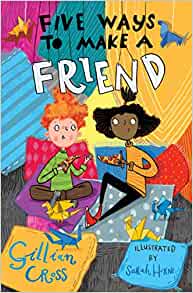 Five Ways to Make a Friend by Gillian Cross, illustrated by Sarah Horne
Five Ways to Make a Friend by Gillian Cross, illustrated by Sarah Horne The Boy Who Made Everyone Laugh by Helen Rutter
The Boy Who Made Everyone Laugh by Helen Rutter Pie in the Sky by Remi Lai
Pie in the Sky by Remi Lai

 3. Make a splash! – ‘Moon River Melody’ (
3. Make a splash! – ‘Moon River Melody’ ( 4. Visit animal friends from distant lands! – ‘Alphabet Zoo’ (
4. Visit animal friends from distant lands! – ‘Alphabet Zoo’ (

 4. Seashells
4. Seashells 2. Staycations
2. Staycations
 We have received awesome feedback from the schools that subscribe to Storytime, and some teachers have even sent us tips about how they use the magazine in the classroom! We liked their feedback so much that we are sharing some of their ideas here –
We have received awesome feedback from the schools that subscribe to Storytime, and some teachers have even sent us tips about how they use the magazine in the classroom! We liked their feedback so much that we are sharing some of their ideas here –  Shared reading
Shared reading Peer-to-peer reading
Peer-to-peer reading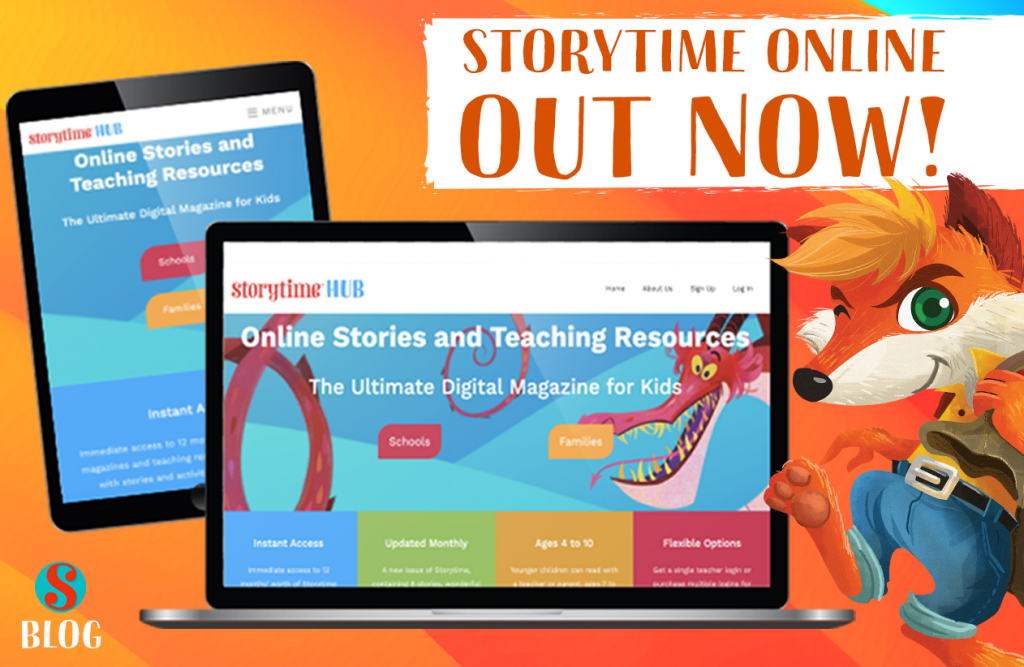
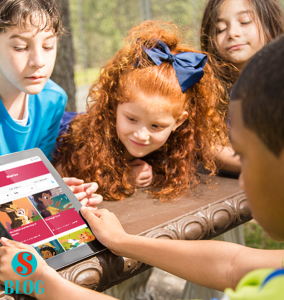 With Storytime Hub, we have made our extensive catalogue of over 700 stories and 80 home learning packs accessible digitally for teachers and parents to use all over the world for the first time.
With Storytime Hub, we have made our extensive catalogue of over 700 stories and 80 home learning packs accessible digitally for teachers and parents to use all over the world for the first time.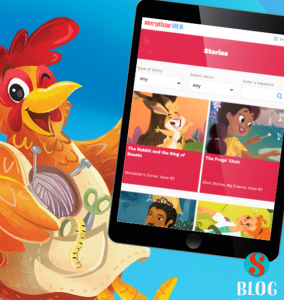 There are a range of subscription options available –
There are a range of subscription options available –  We hope that Storytime Hub will give kids more opportunities to enjoy our content in the way that suits parents, carers and educators.
We hope that Storytime Hub will give kids more opportunities to enjoy our content in the way that suits parents, carers and educators. 
 Away Game! (Storytime #78) is a fun story about three boys who accidentally travel back in time to the Middle Ages – and play a pick-up game of football! They go back in time on the same village they live in – and can recognise some parts of it but are also surprised by other the aspects they did not know. After reading this tale, why not discuss the history of your neighbourhood, and what life would have been like there 50 (or 500!) years ago? Are there any buildings, landmarks or that date back hundreds of years and give an insight into its history? For extra fun, look for old photographs of your area. Which bits are still the same, and which have changed beyond all recognition?
Away Game! (Storytime #78) is a fun story about three boys who accidentally travel back in time to the Middle Ages – and play a pick-up game of football! They go back in time on the same village they live in – and can recognise some parts of it but are also surprised by other the aspects they did not know. After reading this tale, why not discuss the history of your neighbourhood, and what life would have been like there 50 (or 500!) years ago? Are there any buildings, landmarks or that date back hundreds of years and give an insight into its history? For extra fun, look for old photographs of your area. Which bits are still the same, and which have changed beyond all recognition?

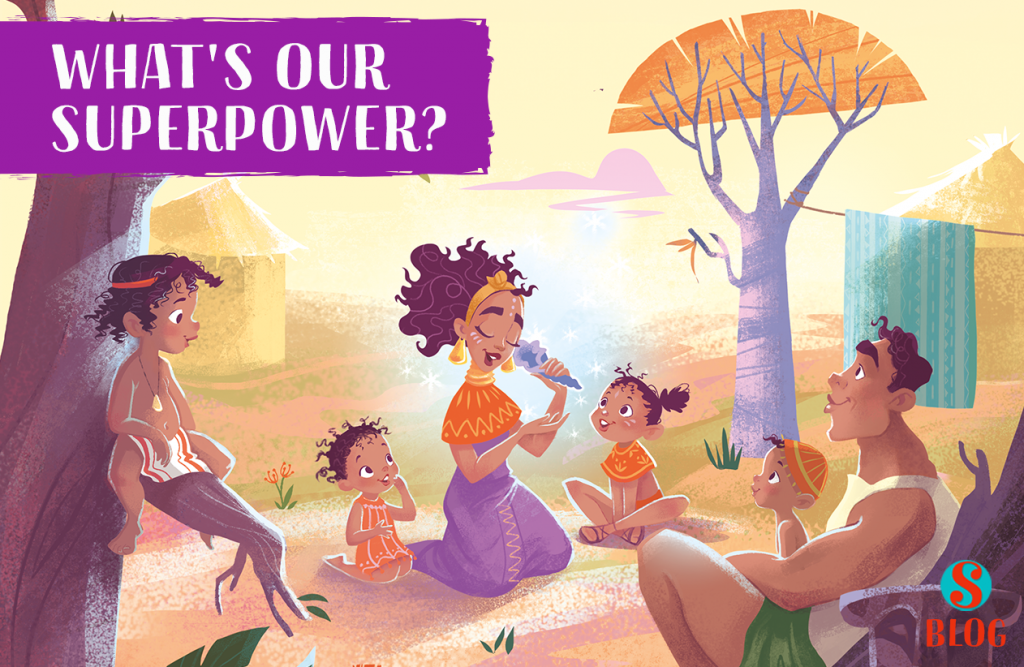
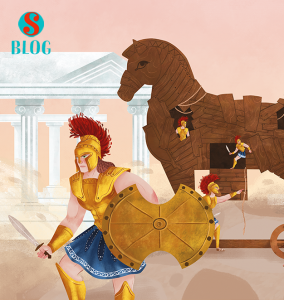 As the editor of Storytime, I spend a lot of time thinking about stories. In fact, I have a theory that is telling stories is actually what makes humans special. That might sound a bit absurd, because other creatures can communicate too. However, as far as we know, humans are the only creatures that can tell long and elaborate tales – which are a very effective way of passing along knowledge and wisdom.
As the editor of Storytime, I spend a lot of time thinking about stories. In fact, I have a theory that is telling stories is actually what makes humans special. That might sound a bit absurd, because other creatures can communicate too. However, as far as we know, humans are the only creatures that can tell long and elaborate tales – which are a very effective way of passing along knowledge and wisdom.